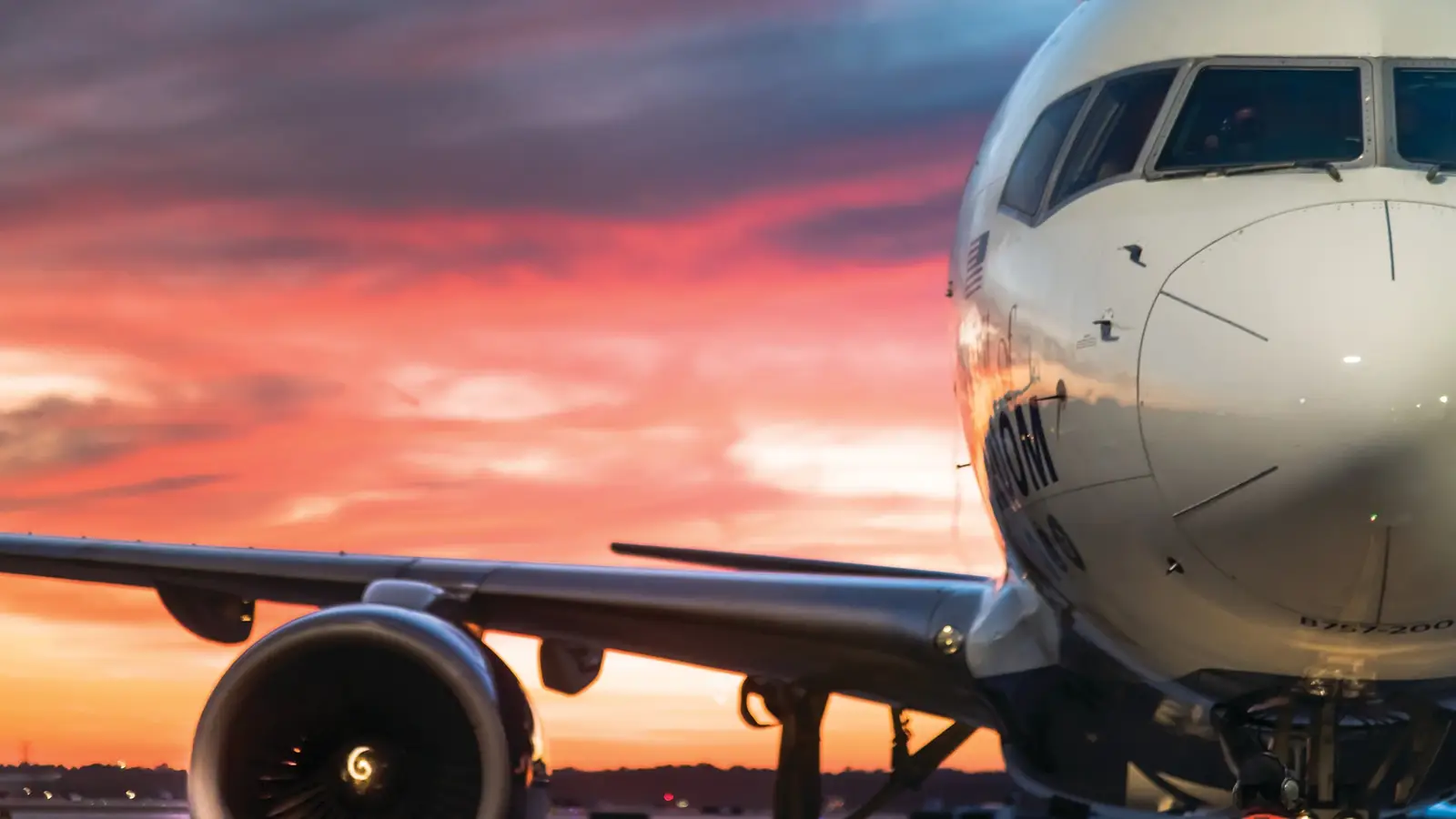
In a unique story of aviation history, Delta Air Lines operates the largest fleet of Boeing 757 jetliners in the world. The aircraft is an older but much-loved model today, but when it first came online in 1984, it was a major improvement in design, performance, comfort, and efficiency. Over four decades later, Delta still flies nearly half the total number delivered and currently has the largest 757 fleet in the world.
The 757 replaced the obsolete Boeing 727 when it entered service with Delta. Delta was the launch customer for the -232 variant with the PW2037 engine. The Pratt & Whitney (PW) engines provided 10 percent more fuel efficiency than earlier JT10D PW engines offered on the 757, as the Delta Museum notes. On top of being fuel efficient, the 757 is favored by pilots for its handling, which is often likened to that of a “muscle jet” with a higher-than-average power-to-weight ratio.
In 2025, Delta has grown to increasingly favor Airbus because of the instability of Boeing deliveries as well as the 737 MAX grounding, which was the longest in history at 20 months. Boeing’s slow delivery of 737 MAXs and the ongoing certification struggles of the 777X have pushed Delta to buy from across the pond. Despite all of that, Delta is a famously proud flier of the legacy Boeing 757.
Let’s dive into the story behind this unique relationship and how the 757 became an icon of one of America’s oldest and most successful carriers.
How It All Started: If It Ain’t Boeing, I Ain’t Going
As the saying went, in the golden era of air travel. Boeing was the undisputed champion of commercial aircraft manufacturers. Even with competition from McDonnell Douglas on top of Airbus at the time, Boeing reigned supreme. The 737 had skyrocketed to be the most mass-produced commercial airliner of all time, a title it still holds, and the 747 had raised the bar of premium flying to new heights. The 757 was a successor to a legacy of engineering excellence, innovation, quality, and American ingenuity – and it showed – Delta wasn’t the first customer, but it became the best customer in short order.
The Boeing 757 is a classic twin-engine, single-aisle jet. It was first announced in 1978 and entered service with Eastern Air Lines in 1983. The 757 became popular for its exceptional performance, efficiency, and versatility, especially for short to medium-haul routes. It gained ETOPS approval for intercontinental flights in 1986 and, despite being a narrowbody, it became a popular international flyer.
Delta was planning to order the 757 before it debuted but wanted to wait for the Pratt & Whitney engined model, so they received their first deliveries later than early launch customers. Ron Allen, Delta president and CEO, when Delta’s first 757 arrived in 1984, said: “We felt it was worth waiting for.”
The 757-200 was the primary model, but variants included the 757-200PF (package freighter) and a combination freighter-passenger model. A stretched version, the 757-300, was launched in 1996 and entered service in 1999. Delta primarily flew the -232, which it originally ordered, but acquired a number of other models in later years through mergers and secondhand purchases.
Boeing 757 By The Numbers
A new Boeing wing design with full-span leading-edge slats and double-slotted trailing edge flaps allowed for takeoffs with a full passenger load using roughly 1,250 feet less runway than the 727 needed for a 1,500 nautical-mile journey. The 757 could cruise at a higher altitude than the more sophisticated 727-200 thanks to its new wing and high-thrust engines, which allowed for greater fuel savings and the use of higher airways.
Runways that were previously inaccessible to commercial aircraft of its size were now open to the 757 thanks to its four-wheel main landing gear units. It had the same pavement loading as the smaller 737. Here’s a snapshot of some key specifications to put the 757’s performance in context, courtesy of the Delta Museum:
Even today the 757 performance stands out among modern jetliners. One unnamed 757 pilot was quoted by Aviation Geek Club in a story on the legacy that the high-performing airliner has created with its exceptional handling:
“As an Air Traffic Controller, I have also noticed one thing about the 757… It tends to cruise higher and faster than other traffic. When radar controllers are bored, they tend to look for this stuff. I used to bet other controllers on aircraft type, and whenever I saw a target passing overhead in the 40,000-plus altitude range at 500 knots-plus, I would always say, “I bet you that’s a Seven-Five.” It almost always was.”
The 757-200 outperformed the Boeing 727 it replaced in the Delta fleet in terms of fuel efficiency with a roughly 45% lower burn rate. It could also fly with a crew of two pilots and six flight attendants, instead of the older 727’s three-person crew and lower flight attendant count of four. It also had more seats than the 727, with 187 compared to 148. Those numbers add up to both huge savings and much higher profit potential for Delta.
Building The Ultimate 757 Fleet
A strong secondary market developed in the 2000s as other airlines started retiring their 757 fleets, enabling Delta to purchase more aircraft at lower prices. The airline can maintain these aircraft at a reasonable cost thanks to its advanced in-house maintenance capabilities. Delta TechOps is one of the largest and best maintenance, repair, and overhaul (MRO) operations in the world now. It is easily capable of performing anything from routine maintenance to full cabin renovations.
Delta’s 757 fleet was also boosted by the 2008 merger with Northwest Airlines, which added 61 aircraft overnight. Thanks to having the same engine type as Delta’s current fleet, Northwest’s 757s made a smooth transition to strengthen the jet’s position in the fleet. The 757 was only made stronger as a pillar of Delta’s fleet after the merger.
Perhaps most significantly, the absence of a true successor to the 757 has reinforced Delta’s commitment to the type. Production ended in October 2004, and the final Boeing 757 was delivered in November 2005. Production ending is largely due to the increased versatility and popularity of the new 737 Next-Generation (NG) and the ongoing development of the 787 Dreamliner.
Flying Pencil: The Irreplaceable 757
While newer aircraft such as the Airbus A321XLR and Boeing 737 MAX variants offer certain advantages, none match the Flying Pencil’s (as the 757 is called) versatility in Delta’s network. This has led Delta to pursue a strategy of continuous investment in its existing 757 fleet, including avionics upgrades and cabin modernizations, to extend the aircraft’s operational life well into the 2030s.
Delta’s evolving market strategies have also benefited from the 757’s configurational flexibility. From premium transcontinental services with lie-flat business class seats to high-density leisure routes, the airline has routinely redesigned its 757s to serve a variety of markets. That quality has been very beneficial for Delta to meet a wide range of customer demands while maintaining cost and ops efficiency.
Swiftly responding to shifting market conditions without incurring the cost of introducing new aircraft types has become an increasingly important element for commercial airliners. Since Boeing ceased production, no manufacturer has produced an aircraft that replicates the 757’s unique combination of range, runway performance, and cargo capacity.
The 757 Successor(s)
Operationally, the 757 sits in a “Goldilocks” niche that newer jets struggle to fill. Even so, time is not standing still. Aging airframes, carbon goals, and a new class of long-range single-aisles will erode the 757’s advantage. Delta’s ongoing avionics upgrades and cabin refreshes serve as a bridge, preserving utility until a genuine replacement becomes available. When the last Delta 757 finally bows out, it will close a chapter in which one airframe embodied an airline’s identity.
Delta will replace its 757 fleet with a combination of, primarily expected to be the Airbus A321neo and later the as-of-yet-uncertified Boeing 737 MAX 10. The A321neo is a popular, fuel-efficient narrowbody jet that can cover many short-to-medium-haul routes currently operated by the 757. Delta has already begun replacing some 757s with A321neos. The A321XLR variant offers “Xtra Long Range” and is slated to be the successor to the 757-200 on transcontinental and transatlantic flights.
Delta also has orders for the 737 MAX 10, the largest version of the 737 family. It will help replace the 757s on high-density routes where the larger 757-300 variant is flown. Despite these plans, the -300 is expected to remain in Delta’s fleet into the 2030s.



